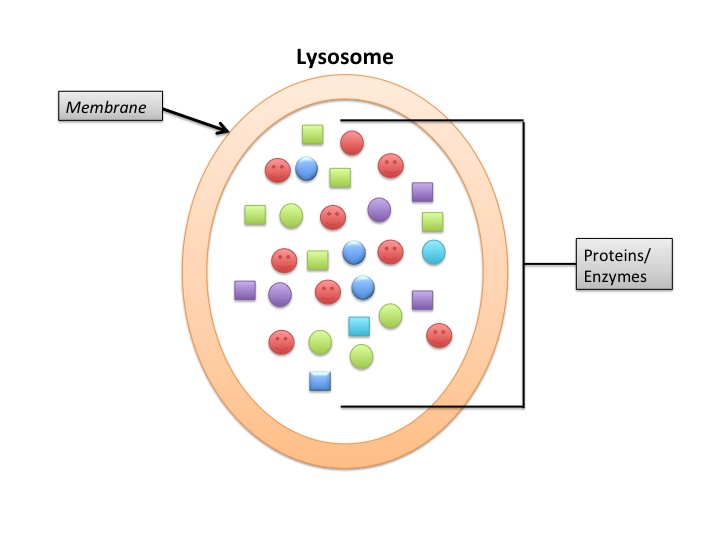Lysosomes are organelles enclosed by a single impermeable membrane and contain hydrolytic (digestive) enzymes in the form of granules which can be crystalline or semicrystalline.
They contain hydrolytic enzymes like acid phosphatases, proteases, peptidases, nucleases, lipases, and carbohydrates. These acid hydrolases have an acidic medium (ph 4-5).
Lysosomes are famously known as “Suicide bags” of the cell. It is part of the endomembrane system, which includes and comprises of the Endoplasmic reticulum, Golgi complex, and vacuoles.
Index
History
While studying the physiology of the insulin hormone, Christian de Duve accidentally discovered the lysosome.
He is a Belgian scientist working at the Catholic University of Louvain in Belgium. De Duve and Novikoff from the University of Vermont confirmed the location of hydrolytic enzymes in lysosomes. De Duve received a noble prize in 1974 in the field of Physiology or medicine.

Structure and Origin
Lysosomes are generally round vesicles with diameters varying from 0.2-0.8 micrometres. They occur in all animal cells, except for matured mammalian erythrocytes (RBCs).
In Plants and Fungi, vacuoles take over the function of lysosomes. Endoplasmic Reticulum is the site of synthesis for these organelles and are processed in the Golgi Complex.

Types
Lysosomes exhibit the phenomenon of Polymorphism; they show different forms in the same cell. On the basis of structure and functions, they are classified into four types:
- Primary Lysosomes: Freshly synthesized ones which are small in size and contain granular hydrolytic enzymes.
- Secondary Lysosomes (heterophagosome or digestive vacuole): Formed by the fusion of lysosome and phagosome (which contain food).
- Residual Bodies (Residual of Tertiary Lysosome): Contains indigestible food particles, subsequently removed from the cell by exocytosis or ephagy. Failure to remove them may lead to Lysosome Storage Diseases like Pompe disease etc.
- Autophagic Vacuoles (Autophagosomes or Autolysosomes): “Disposal bags” or “recycling centres” as they digest worn-out or damaged intracellular components and release the digested components as raw materials for the cell.
Functions of Lysosomes
- Intracellular Digestion: They aid in the digestion of intracellular materials.
- Defensive Function: They consume and digest foreign particles, aiding the body’s natural defense.
- Autophagy: They help in digesting the discarded waste generated within the cell and this process is called autophagy.
Questions
- What are lysosomes?
Lysosomes are small vesicles enclosed by a single impermeable membrane. It contains hydrolytic (digestive) enzymes in the form of granules which can be crystalline or semicrystalline.
- What is the function of a lysosome?
They aid in the digestion of intracellular materials like food particles and worn-out cellular components. They consume and digest foreign particles and aid in the body’s natural defence.
FAQs
Lysosomes are formed after being synthesized in the Endoplasmic Reticulum and processed in the Golgi Complex.
Lysosomes contain an abundance of hydrolytic enzymes and are thus called suicide bags. They were initially hypothesized to play a significant role in cell apoptosis, but modern research has shown they play only a limited role in the process.
There are four types namely Primary, Secondary, Residual, and Autophagic Vacuole.
They were discovered by the Belgian scientist Christian de Duve.
Lysosomal enzymes are functional in acidic pH (4-5) and thus are also called acid hydrolases.
Related Articles:
